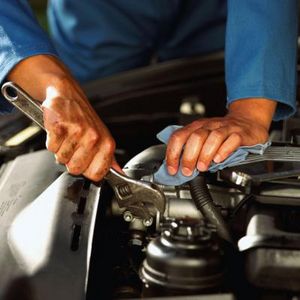Drivers today take power steering for granted, but just like any other machine, it can fail. Driving with your power steering pump in a damaged or defective condition is incredibly dangerous. At best, it makes the vehicle much harder to control, and at worst, you can lose the ability to steer completely. You can take your Grand Am to a certified mechanic to have the work done for you, but that is often costly and time consuming. With a few tools and spare parts, you can replace your power steering pump manually. Here’s a guide on how to fix your power steering.
Before you order a part or pick up a tool, you need to familiarize yourself with the power steering system. The components will be shown and labeled in your vehicle’s manual, if you still have it sitting around. If not, you can easily find a copy of the manual online or by contacting Pontiac yourself. Sometimes a local auto store or even a county library will have the relevant manuals on hand as well. Keep the manual handy, or make photocopies of all of the relevant pages for use later. You may want to have a reference on hand when you start taking things apart.

Before you begin tinkering with your car under the hood, you’ll want to disable your airbags. The last thing you want is for one of your actions to trip an impact sensor and set off the airbags. Doing so will damage your steering wheel and necessitate a replacement airbag. If you’re unlucky, an airbag going off unexpectedly can lead to injury as well. Always be safe when working on large machines. You may need to remove some fuses to disable your airbags fully. If this is the case, refer to your manual for which fuses to remove and set them carefully aside.
Once your airbags are disabled, there are a few more precautions you need to take before you can officially start to work on your car. Make sure your front wheels are facing straight and ensure that the ignition is switched off. Once this is done and a few minutes have passed, you can begin changing your power steering pump.
Your Grand Am may have a purge valve or an emission-EVAP-canister. If it does, you will need to remove it. You will also need to detach or remove the duct in the top of the compartment and the air cleaning mechanism itself. You will also need to remove the solenoid valve.
You might need to take out the engine belt and the upper engine support before you can get to work on the power steering. An appropriately sized wrench will be necessary. Be careful! Do not remove the engine mount without having floor jacks in place to hold the weight of the engine. You don’t want the engine to stress the other mountings or drop out entirely.
Now you’re ready to work on the power steering system itself. Find a pan to catch fluid and position it under the power steering pump. Remove the clamps connecting the pump to the hoses. Remove the hoses. Remove the bolts that hold the pump in place. Remove the pump from the engine compartment. You will be able to use your hands and possible a wrench for this step.
To install the new pump, you will need to repeat the process in reverse. Put the pump in place and replace the mounting bolts. You will want to tighten them to roughly 19 foot pounds of torque. Reconnect the hoses to the pump and reattach the solenoid valve. Put the air cleaning equipment back in place, and reinstall the engine mount and drive belt if you needed to remove them. Once the engine mount is replaced, you can remove the jacks holding up your engine.
Using a funnel, fill the power steering pump with fluid. Start your Grand Am and rev it to get the pump working. Turn your wheel back and forth to test the new pump. Add more fluid periodically until there is no air in the power steering system. Once this is done, assuming you have not encountered any issues, the power steering pump has been replaced.